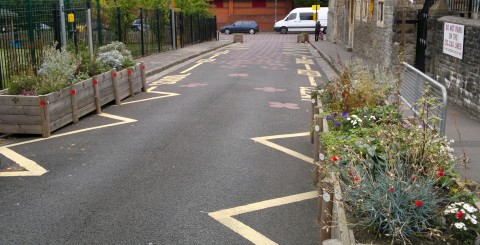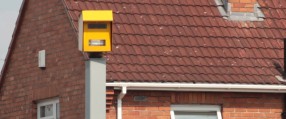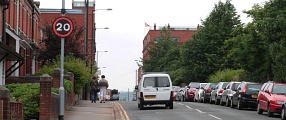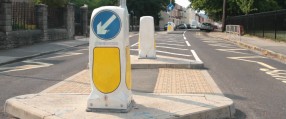DIY Streets

DIY Streets is a concept developed by Sustrans which encourages communities to generate ideas for the improvement of their street. The concept aims to make the street less car dominated, and more community focussed. Typically, this involves creating a ‘community feel’ in the street, with artworks in the road and plants or trees. Wooden flower beds or tree plant pots (planters) are placed in the road to calm vehicle traffic. DIY streets can also incorporate physical traffic calming measures, such as chicanes or narrowing, however this would significantly increase costs.

Sustrans
As a charity based in Bristol, and the developer of DIY streets, Sustrans are available to help with any DIY Streets projects. Visit their DIY Streets page here.
Effectiveness
This intervention doesn’t have any safety evidence available. Instead, likely outcomes are covered.
Placing objects in the road, such as planters, is most likely to reduce traffic speeds, as the carriageway is narrowed, and vehicles may need to give way to each other.
Planters might be expected to have a similar effect to road narrowing.
Artwork in the road is called "psychological traffic calming". It is believed that personalising the street in this way will cause vehicle drivers to slow down, and respect the road as a community space.
Advantages
- Community input helps to maintain support for the project
- Cost effective, as ideas are generated by the community, and plants should be maintained by the community
- Artwork and planters should not attract an objection from the emergency services
Disadvantages
- Uncertainty around on-going maintenance of planters etc. - they must be maintained by the community for the Council to be supportive
- Normally used on small sections of residential road. Money may be better spent on busier sections of road
Restrictions
- DIY street designs must be discussed with Highways engineers at Bristol City Council at an early stage. Art work must conform to certain colours, and must not conflict with existing road markings
There's also some general restrictions to note for all schemes















